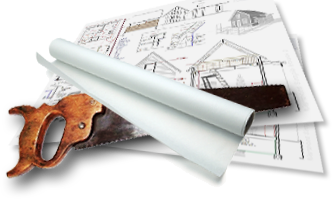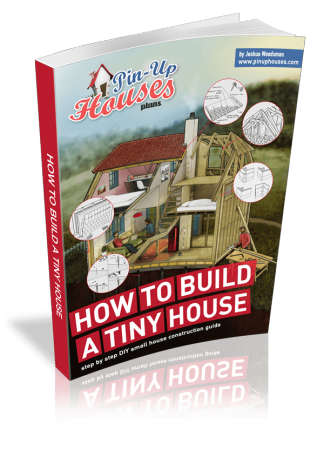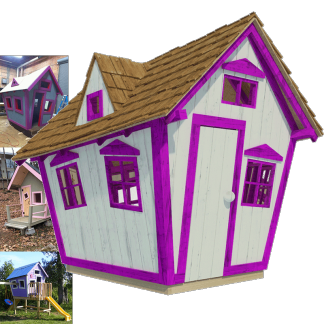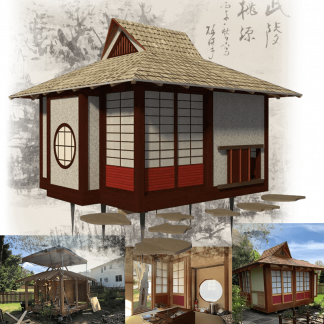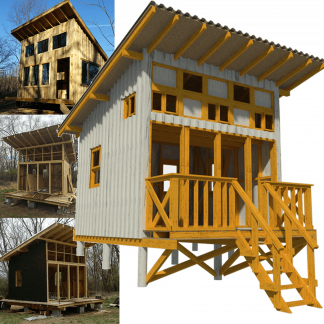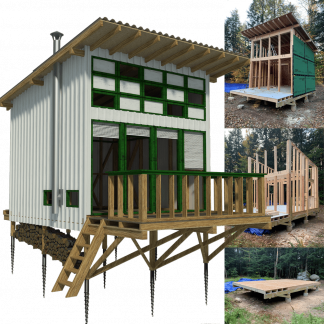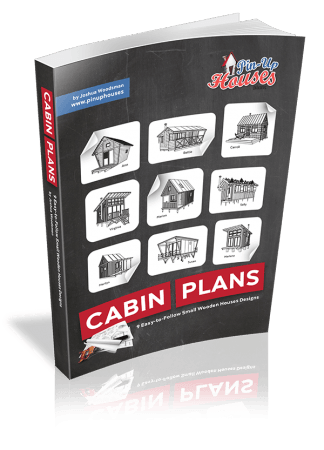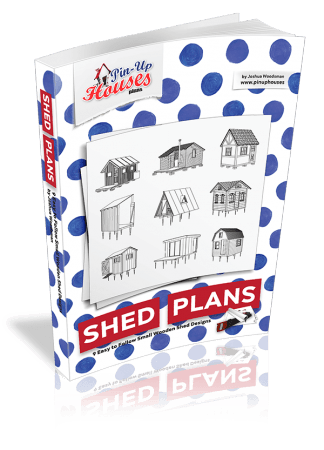Everyone has had that moment when a cluttered desk seems to swallow every thought. Think about how much clearer the mind feels after a quick cleanup. That same principle sits at the heart of tiny house living. By stripping space down to essentials, people find fresh room in their brains for creativity, study, and calm. Early in the journey, many learners also look for tools like writepaperforme to organize ideas on paper, while their new streamlined surroundings organize life. The first 100 square feet of a home may look small, yet it can open huge doors for concentration. This article explores how tiny living, from a stylish modern yurt house to a big tiny house parked by the lake, teaches focus and fuels active learning. It will uncover why less stuff, fewer walls, and smart design equal more attention for books, hobbies, and dreams. Readers will find simple tips they can test today, no power tools required.
From Downsizing to Sharpening Focus
When someone reduces a three-bedroom sprawl to a cozy cabin on wheels, the difference is felt immediately. In a regular house, visual noise hides in every corner: piles of mail, half-finished projects, and gadgets that promise productivity yet steal attention. Tiny house living forces decisions. Every mug, cable, and coat must earn its keep. The act of curating belongings doubles as mental training. It teaches the brain to label what is necessary and to let go of what is not. Researchers call this “attentional filtering,” and it is a cornerstone of effective studying. Students who practice it in their environment find it easier to ignore digital pop-ups and peer chatter later. A child who regularly tidies the single shelf above the fold-down desk builds the same muscle needed to sort main ideas from side notes in class. Downsizing, therefore, becomes a daily exercise that sharpens focus without a textbook in sight.
The Psychology Behind Tiny Living and Concentration
Not all benefits of tiny living can be captured by tape measure. Psychologists note that humans are wired to scan their surroundings for threats and tasks. The more items the eye lands on, the harder the brain must work. In a giant living room, the glance hops from TV to bookshelf to laundry basket. Inside a streamlined tiny modern home, there are fewer jumps to make, so cognitive load drops. Lower load frees working memory, the mental scratch pad used to solve math problems or decode a poem. Lower stress hormones follow, and calmer bodies learn faster. Studies on open-office noise show similar patterns; the fewer stimuli, the better memory recall. By designing a nest that contains only valued objects—maybe a guitar, a tablet, and one bold window—tiny dwellers create an external form of mindfulness. Instead of closing their eyes to meditate, they set up a place that meditates for them every minute.
How Less Space Means More Time for Learning
In a standard suburban dwelling, daily chores stretch like elastic. Floors to mop, closets to reorder, lawns to trim—each task nibbling at study hours. Shrink the footprint and chores shrink too. A compact kitchen takes five minutes to wipe down. One multipurpose closet needs a quick straighten, not a weekend purge. That saved time can migrate toward reading history, practicing a new language app, or building a model rocket. Tiny house owners often track budget closely, and the same habit applies to minutes. They learn to ask, “Does this activity bring value?” before hitting a streaming service. Frugal scheduling lets hobbies rise to curriculum level. Parents living small report that kids join meal prep willingly because countertops are within easy reach. With dishes done faster, the family can dive into a science experiment at the drop-down table. By pruning square footage, residents harvest extra hours for curiosity to bloom daily.
Turning a Modern Yurt House into a Classroom
A modern yurt house blends ancient nomadic design with twenty-first-century materials. Round walls invite sound to circulate evenly, making the space surprisingly good for small lectures or music lessons. Because there are no sharp corners, furniture can float, allowing quick switches between activities. One hour the child’s easel stands centre stage; the next, a beanbag collage of comfy seats forms a reading circle. Skylight crowns often top the roof, bathing the interior with daylight that reduces eye strain during workbook sessions. Storage wraps along the curve, keeping pencils, microscopes, and board games out of sight until needed. In this way, the yurt becomes a pop-up learning lab. Parents can hang a world map that follows the undulating wall, turning geography study into a physical journey. At night, the same map doubles as a screen for projected documentaries. The structure itself demonstrates geometry, insulation science, and cultural history, packed into one cozy shell.
The Role of the Tiny House Movement in Education Trends
The tiny house movement started as a rebellion against rising mortgages but has snowballed into a laboratory for new schooling ideas. Universities now host design studios where architecture students craft micro-dwellings on campus lawns. Sociology classes visit these sites to discuss sustainability and social equity. The cross-pollination mirrors real life, where carpenters, teachers, and digital nomads gather at festivals to trade lessons learned. In many states, zoning rules are evolving, and civics instructors use public hearings on accessory dwellings as live case studies. Homeschool networks also latch onto the movement. Families caravan from park to park, logging miles for biology observations and history interviews. By linking shelter, finance, and ecology, the tiny house movement gives context to abstract subjects. Learners see insulation R-values, energy budgets, and municipal codes not as textbook chapters but as daily choices. Education becomes experiential, and the small footprint leaves a large educational trail for many.
Big Tiny House, Big Lessons in Organization
A big tiny house may sound like a contradiction, yet models stretching to 400 square feet illustrate advanced organization on steroids. Builders slide drawers into staircase risers and conceal pantries beneath seating benches. Seeing these secret compartments sparks learners’ spatial reasoning—the same skill used to visualize fractions or molecules. Mapping every cubic inch trains the mind to think in systems. Which item is used most? Place it at hand height. Which season is it for? Store it up high. The rule set mirrors note-taking hierarchies where main ideas sit at the top and details nest below. Families living in a big tiny house often create rotating chore charts pinned to a single cork board. Because wall space is limited, information must be concise, reinforcing summary skills. Even meal planning becomes a puzzle: three ingredients, four dishes, zero waste. The dwelling becomes a live worksheet where efficiency and creativity trade harmonious high fives.
Semi With Trailer: Mobility and Experiential Learning
Picture a semi with trailer converted into a roaming classroom. The tractor gives serious hauling power, while the trailer holds collapsible bunks, a lab table, and a small library. Schools in rural districts have begun experimenting with such rigs to reach students scattered across wide counties. The road becomes syllabus: geology fieldwork at a canyon stop, literature discussion at a prairie rest area, and math exercises calculating fuel efficiency in real time. Mobility keeps lessons grounded in tangible sights, sounds, and smells. Children remember the pH test they performed at a riverside more vividly than one done in a florescent lab. The semi with trailer model echoes early human learning, which depended on moving with the seasons. For tiny house fans, hitching up and rolling out means turning the whole nation into a campus. Geography, problem solving, and adaptability travel together, mile after mile. Along the journey, mentors record video reflections that students later edit into digital portfolios, combining media arts with core subjects.
Designing a Tiny Modern Home for Lifelong Learning
Whether settled on a foundation or perched on axles, a tiny modern home can be built around curiosity from day one. Start with flexible lighting: dimmable LEDs over the sofa turn movie night into a planetarium simulation with star-chart apps. Add a magnetic chalkboard wall that flips down from a cabinet door; in seconds dinner recipes give way to algebra practice. A loft ladder fitted with piano-style steps invites impromptu music drills as kids climb. Even plumbing can teach; clear PVC traps under the sink reveal the physics of water flow and air pressure. Tech lovers might embed sensors that count door opens or solar watts, feeding real-time data to a dashboard for coding projects. Books hide in kick-plate drawers, and a fold-out deck supports telescope mounts. By weaving mini lab stations into daily fixtures, the tiny modern home ensures that learning doesn’t clock out when class ends; it sleeps, eats, and laughs with its occupants.
Key Takeaways: Small Space, Expansive Mind
Tiny spaces compress walls but expand possibilities. First, they cultivate intentional focus by removing excess stimuli. Second, they give back the most precious resource—time—through faster chores and leaner budgets. Third, they transform the home itself into a multisensory workbook, whether that home is a modern yurt house glowing under the moon or a semi with trailer humming down Route 66. Finally, they link everyday choices to global issues such as sustainability and community zoning, providing real-world context for abstract lessons. Any learner, even one living in a city apartment, can borrow these ideas: declutter a desk, map storage zones, or add wheels to education by studying in different parks. There is no need to own cedar siding to join the tiny living mindset. Start small, stay curious, and watch knowledge grow bigger than any four walls could ever hold. That is the ultimate lesson in focus and lifelong learning truly.

